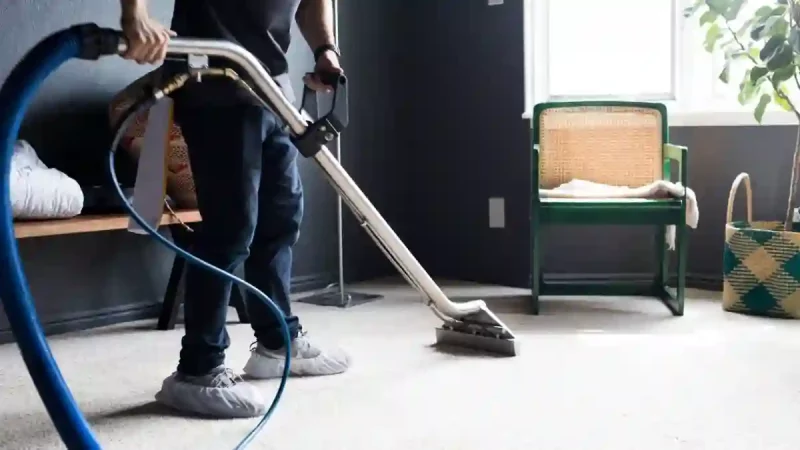Indoor air quality (IAQ) is a crucial aspect of our living environments that often goes unnoticed. The air we breathe indoors can have a significant impact on our health and well-being. One often overlooked contributor to IAQ is the cleanliness of our rugs. In this article, we will explore the vital role rug cleaning plays in improving and maintaining indoor air quality, and why regular cleaning is essential for a healthier home.
Understanding Indoor Air Quality (IAQ)
Indoor air quality refers to the quality of the air within and around buildings, particularly as it relates to the health and comfort of the occupants. IAQ is influenced by a variety of factors, including the presence of pollutants, humidity levels, ventilation, and temperature. Poor IAQ can lead to health issues such as respiratory problems, allergies, and even long-term chronic conditions.
The Connection Between Rugs and Indoor Air Quality
Rugs are an integral part of many homes, providing warmth, comfort, and aesthetic appeal. However, they also serve as reservoirs for dust, allergens, and pollutants that can affect IAQ. Here’s how rugs impact indoor air quality:
- Dust Accumulation: Rugs can accumulate dust particles, which are then released into the air when disturbed by foot traffic or airflow. This can lead to increased levels of airborne dust in your home.
- Allergen Storage: Rugs can harbor allergens such as pollen, pet dander, and dust mites. These allergens can become airborne when disturbed, potentially triggering allergic reactions or exacerbating existing conditions.
- Microbial Growth: Moisture and organic matter trapped in rugs can create an ideal environment for microbial growth, including mold and mildew. These microorganisms release spores and mycotoxins into the air, contributing to poor IAQ.
- Chemical Contaminants: Rugs may contain or accumulate chemical contaminants, such as volatile organic compounds (VOCs) from cleaning products or off-gassing from rug materials. These chemicals can be released into the air and affect IAQ.
The Importance of Regular Rug Cleaning
Regular rug cleaning is a fundamental aspect of maintaining good indoor air quality. Here’s how it positively impacts IAQ:
- Removal of Allergens: Thorough rug cleaning removes trapped allergens, such as pollen, pet dander, and dust mites. This reduces the potential for allergen-related health issues and improves IAQ.
- Dust Reduction: Proper cleaning methods, including vacuuming and deep cleaning, effectively remove dust particles from rugs. This prevents the release of dust into the air and minimizes airborne dust levels.
- Microbial Control: Professional rug cleaning can address microbial growth, such as mold and mildew, by eliminating the source of moisture and using antimicrobial treatments. This prevents the release of harmful spores and mycotoxins into the air.
- Chemical Contaminant Removal: Rug cleaning can help remove chemical contaminants that may have accumulated in rugs. This reduces the emission of VOCs and other chemicals into the indoor air.
Effective Rug Cleaning Techniques for IAQ Improvement
To maximize the positive impact of rug cleaning on indoor air quality, consider the following techniques:
- Regular Vacuuming: Frequent vacuuming with a vacuum cleaner equipped with a HEPA filter is essential for removing surface dust and allergens. HEPA filters can trap fine particles, preventing them from being released back into the air.
- Steam Cleaning: Steam cleaning, also known as hot water extraction, is an effective method for deep cleaning rugs. The high temperature of the steam helps kill dust mites, remove allergens, and sanitize the rug.
- Dry Cleaning: Some rugs, especially those made from delicate fibers, may require dry cleaning. This method is less effective in allergen removal compared to steam cleaning but is necessary for certain types of rugs.
- Professional Cleaning: Periodic professional rug cleaning is recommended, especially for large or high-traffic rugs. Professional cleaners have the equipment and expertise to remove deeply embedded allergens and contaminants.
- Proper Drying: After cleaning, ensure that the rugs are thoroughly dried to prevent mold growth. Proper ventilation and moisture control are essential.
Additional Tips for Maintaining IAQ
In addition to regular rug cleaning, consider these tips to further improve and maintain indoor air quality:
- Use Doormats: Place high-quality doormats at entrances to reduce the amount of dirt and contaminants brought into your home.
- Control Humidity: Maintain indoor humidity levels between 30% to 50% to discourage dust mite infestations and mold growth.
- Ventilation: Ensure proper ventilation in your home by using exhaust fans, opening windows, and using air purifiers with HEPA filters.
- Regular Maintenance: Stay on top of home maintenance tasks, including changing HVAC filters, cleaning air ducts, and addressing leaks or water damage promptly.
- Reduce Chemical Exposure: Choose low-VOC or VOC-free cleaning products, paints, and furnishings to minimize chemical contaminants in your home.
Conclusion
The impact of rug cleaning on indoor air quality cannot be overstated. Clean rugs contribute to healthier indoor environments by reducing allergens, dust, microbial growth, and chemical contaminants. Regular maintenance and proper cleaning methods are essential for preserving the cleanliness of your rugs and the quality of the air you breathe. By prioritizing rug cleaning as part of your overall home maintenance, you can enjoy cleaner, fresher indoor air and promote the well-being of your household. Remember, a clean rug is not just a visual asset; it’s a cornerstone of a healthier living space.

